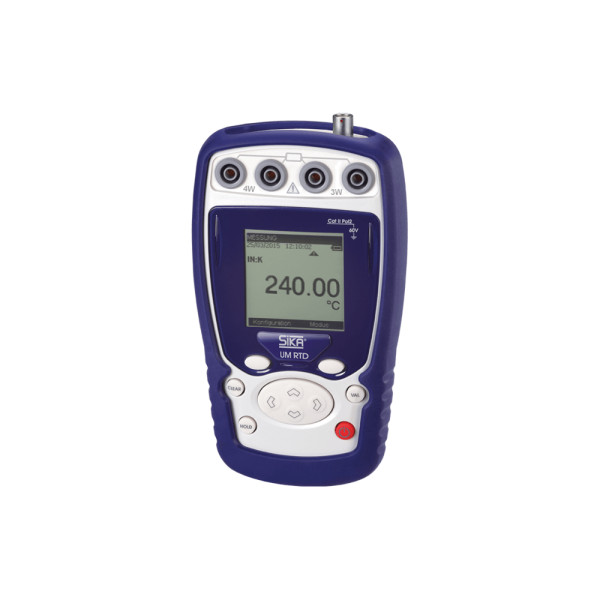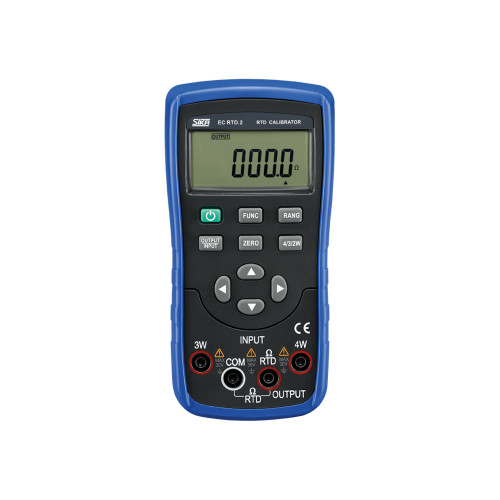Product Overview
Digital universal temperature hand-held instrument for the use of Pt100 changeable sensors.
The high accuracy in signal detection and processing is achieved by powerful sensors with electronic linearisation of the characteristic curve. For extensive measuring tasks, the appropriate sensors are available.
The innovative design of the shapely housing as well as the advanced technology provide for comfortable handling. In mobile use, all functions can be conveniently selected and executed at the touch of a button. The membrane keypad ensures protection against dust and humidity.
In addition to the MIN/MAX values, hold function and the selected units of measurement, various calculated values such as differential temperature, differential pressure, dew point or heat content can also be displayed on the multifunction display.
The automatic sensor detection via standard DIN sockets offers a plug-and-play solution which is easily installed.
With this function, customer-specific characteristic curves can be used in addition to the standard conversion of the resistance/temperature characteristic curve according to EN 60751. The
UM RTD.2 have a very high measuring accuracy. In order to be able to use this high accuracy, correspondingly high-quality temperature sensors must be used. For this purpose, different accuracy classes are available as standard.
For applications with very high accuracy requirements that are higher than the accuracy of the sensor itself, it is recommended to match the sensor to the measuring instrument via a user characteristic curve. For the calculation, the calibrated actual values of the sensor are determined and compared with the actual temperatures in a comparison table. From these reference points, the user characteristic curve is generated via a mathematical function and stored in the measuring instrument. With the UM RTD.2, 10 value pairs can be stored.
For the transfer of the measured and stored values to a PC, the majority of the instruments are equipped with a serial interface. Various software packages with extensive recorder and display functions and for the evaluation of logger and alarm values are available. The recorded and visualised measurement processes can then be used to clearly monitor and analyse process sequences. All data can be exported to standard programs such as Excel.
An optical and acoustic warning signal indicate exceeding or undershooting a programmed alarm point. The transfer via PC is also possible. Thanks to the real-time clock, all data can be displayed with year and date.







